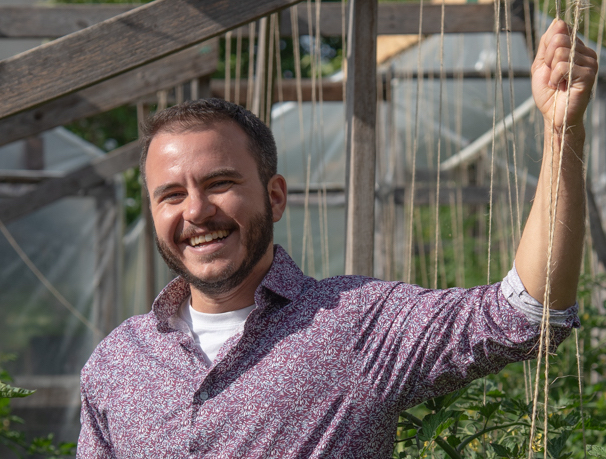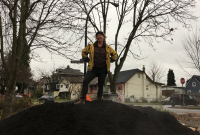Support strong Canadian climate journalism for 2025
For Aaren Topley, B.C.’s front-line workers inspire him to continue learning, researching and working with all things food.
“Whether that's a teacher doing a school garden or a meal program, or someone providing community meal programs to people that are living on the streets,” he said. “Those people really inspire me day to day. I get to connect with them.”
Topley has worked in food system development for eight years and is now the provincial manager of Can You Dig It at the Public Health Association of BC. For the past four years, he has worked with Farm to School BC, which brings fresh and sustainable produce to schools across the province.
Canada’s National Observer caught up with him for a chat about school farms, farming on public land and how communicating with municipalities about food can result in change.
You helped establish Victoria’s first urban school farm while working with Farm to School BC. How does that work?
It’s a model where a local urban farm grows on school land. There's about 6,000 square feet of space for them to grow in. Every week, they send out an e-mail to the teachers letting them know what they’re up to in the garden and give them some ways they could connect their curriculum to what the Mason Street Farm is doing.
What makes the way the school farm operates interesting?
I think what’s unique about the model is that the school gets produce, a neighbourhood house across the street gets food for their box program, the farm provides some of the food for low-income folks, and some of it is sold to restaurants. And with that, (they're) able to sustain the program without any grant money, which is how they’re usually funded.
Why bring agriculture to schools?
In the next five to 10 years, about half our farmers will retire and others will give up the farm life and move to the urban centres. We're also seeing, at least before COVID, a lot of people moving to urban centres. Before, farm families would pass down their knowledge to their kids and grandchildren, but now we’re seeing a lot of farmers move away from cities to farm. There’s something really powerful about having a farm within an urban setting. Kids get the chance to grow food and see if they want to take it up as a profession. We’re building that next generation of farmers within an urban setting. It can also be really great for kids’ mental health, give a different opportunity for students to shine, and, of course, it increases access to fresh food.
You’re currently working on a project on "place-based community resiliency," which focuses on communities coming together to grow and share food to form resiliency. What is the goal of the project?
We're trying to establish public farms on public lands — school farms and municipal farms. We're going to offer some grants to support these projects and bolster community food resiliency. We’re getting to work with partners like the Young Agrarians, who are going to help us match with farmers, and then, obviously, with Farm to School BC and municipalities. So it’s all about trying to build these public farms that become part of the public asset for creating equitable food access.
You volunteer with the Urban Food Table, a food policy council you helped found, that advises the City of Victoria. Can you give an example of how advice or guidance resulted in change through council?
When COVID first hit, we found that a lot of people were wanting to grow food and a lot of stores that provide soil and other supplies were running low on supply. We started looking for ways to support the community with the infrastructure we already have. And I said, the city has greenhouses and a lot of people are willing to grow food, and we wondered if we could use these city greenhouses to grow seedlings for people. They put forward a motion within a week, and within a month, a portion of city greenhouses were growing seedlings.
What does community food literacy mean to you?
It seems like such a jargon term, but when it's broken down, I see it in three different ways. It's connecting with food, through your hands, through your mind and through your heart. Your hands are getting in the dirt, it's growing food, it's cooking your food — all those things involve your hands. Through your mind, that’s your decisions around food: When I go to the grocery store, why am I selecting this food or that food? Environmental impacts and all those things relate to your knowledge around it. Then my favourite is: To the heart. That's people coming together, sharing food and building community. All those different pieces.
This interview has been edited for length and clarity.
Cloe Logan / Local Journalism Initiative / Canada’s National Observer
This story has been corrected to reflect the accurate square footage of garden space at schools.






Comments